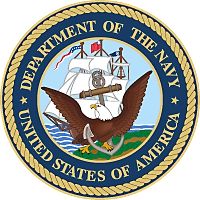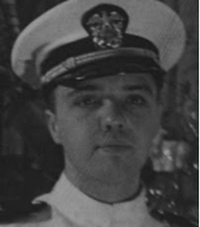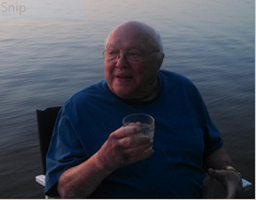Skip to content
Dr. William "Bill" Lawrence Downing
Lilah Crowe2021-01-03T11:01:34-06:00
- Name: Dr. William "Bill" Lawrence Downing
- Location of Birth: Des Moines, Iowa
- Date of Birth: October 2, 1921
- Date of Death: July 21, 2015 (93 years old)
- Parents: Dr. James Downing and Gertrude (Herrmann) Downing
- High School and Class: 1940 - Roosevelt High School, Des Moines, Iowa
- College: 1941 - Drake University in Des Moines, Iowa - Bachelor's Degree
1943 - University of Iowa - Biological Science in Zoology
- Highest Rank:
- Branch: Navy
- Other Branch:
- Date Sworn In: 1943
- Place Sworn In:
- Date of Discharge:
- Place of Discharge:
-
- Military Awards:
- Military Highlights:
Bill joined the United States Navy in 1943, heading overseas to fight in World War II. Because he had studied French, he worked with the Free French Navy. After the battles of Saipan and Okinawa, Bill was among the first to land at Nagasaki after an atomic bomb was dropped on that city--the second dropped on Japan by the United States.
"He never expected to come back," John Downing said, "and so the rest of his life was a gift."
In 1941, Bill completed his Bachelor's degree at Drake University on an accelerated program so he could enlist in US Navy officers' training after the bombing of Pearl Harbor. He was trained in Chicago and California, with special skills in shore-fire control (coordinating naval fire from aerial spotters). William was a Lieutenant JG (Lieutenant Junior Grade) and served in both the European and Pacific Theaters of World War II.
Because of his ability with languages and his early study of French when he was a student at Roosevelt High School in Des Moines, Iowa, Bill was seconded from the US Navy to the Free French Navy, serving aboard the Admiral's flagship, the George Leygues. He may have signaled the first naval shot fire on Normandy during the D-day invasion. General Eisenhower gave Admiral Jaujard of the Free French Navy, ranking officer outside of occupied France, the honor of opening fire on France to liberate his homeland. Admiral Jaujard, transmitted the order to fire to William Downing, and he called "fue" to the French gunners. He continued to be the liaison between British pilots and French gunners throughout the early days of the invasion--without sleep or relief.
Shortly after Normandy was secured, Bill was transferred to Saipan in the Pacific to command a squad of Marines. He was sent to replace an officer who was killed in one of the most costly battles of the Pacific Theater. He remembers his squad of Marines as, "...one of the bravest groups of men I have ever met..." Although he was convinced he would not live through the war, having lost so many close friends and classmates, he decided to ask his childhood best friend, Betsy Meader, to marry him after the war. It was while he was traveling across the United States, after D-Day and before Saipan, that he proposed to her on the telephone. He was being re-deployed so rapidly that he had to hand the engagement ring through the window of a train to another close friend, Warren Rose, to take to Betsy. He spent nearly a year on Saipan assisting in the mop-up operations.
In 1945, at age 24, after the surrender of Japan, Bill was in charge of a landing craft to land at Nagasaki as part of the first post-atomic bomb American presence. The flotilla was recalled but a radio failure in Bill's amphibious craft meant that he landed before the rest of the Navy party. His first assignment in Japan was to set up a hotel for transient allied officers in the former German consulate. Later, he was transferred to the City of Sasebo where he worked as a supply officer supporting the reconstruction of the region. He remembers the people of Japan with great warmth and respect for their resilience and grace under the defeat and destruction they suffered.
Autobiographic outline of William L. (Bill) Downing:
1941 - Signed up for the Navy V-7 program, which meant that when I received my Bachelor's Degree I would attend Midshipman's School and become an Ensign on completion.
1943 - Graduated from Iowa in August, went to Tower Hall Midshipman's School in September, became an Officer and Gentleman in December, 1943. Christmas leave in Des Moines, reported to Camp Bradford, Virginia on January 1, 1944.
Trained as a Naval Gunfire Liaison Officer, to lead a trained group of trained Army or Marines ashore during an assault landing, to be Forward Observers and direct Naval guns against shore targets, using Naval guns as Artillery would otherwise be used.
April, 1944 - Group of Naval Gunfire Liaison Officers sent to Plymouth, United Kingdom, went among 0-class British Destroyers (e.g. Obedient) to set up their radios, for shore-based observers and show them how to crank height into their target calculations.
May, 1944 - Was ordered aboard the French Cruiser Georges Leygues as United States Liaison, then I set them up to fire against shore targets. They proved to be masterful!
4:00 A.M., June 6, 1944 - General Eisenhower asked Admiral Jeaujard, on our ship, to give the signal to begin firing against Normandy. The Admiral called me, and I gave the order to the Fire Direction Center to open fire, the first volley of the invasion.
For the next 10 days I spent day and night in the Fire Direction Center, on iron decks, with ground spot radio in my right ear and air spot in the other.
June, 1944 - Our ship was released from station--keeping off Normandy, and we went back to Milford Haven, Wales to begin resupplying ammo, food, and wine. I went part time to the field hospital set up for wounded from the beaches but none arrived yet, to help me become oriented after my long stint ordering firing.
Wrote orders for the Captain to sign, ordering me back to Plymouth. Ready for some R and R, but instead orders for all of us (maybe 25) to report to the Queen Mary in Scotland and go to New York. Couldn't fathom what was the hurry. Later found we were to replace Naval Gunfire Liaison Officers who had been killed during the awful invasion of Saipan.
Thirty days leave after New York, some spent with Betsy Meader who was working in Hartford, Connecticut. Back to Des Moines, decided I wanted to spend my life with Betsy, proposed over the phone on my next to last day of leave, was accepted, then went on a train to San Diego.
1944 - More training school, became engaged to Betsy by long distance, then to Pearl Harbor, Hawaii for still more training, then flown by PB4Y (patrol bomber) flying boat across the Pacific to Saipan. Arrived Christmas Day.
1945 - Attached as Naval Gunfire Liaison Officer to 5th Marine Regiment, 2nd and a group of 22 Marines, most of whom had been in the Invasion of the island, needed some coddling.
Most of 1945 on Saipan, kept busy in the heat, a trip back to Pearl Harbor for some brief training, and back to Saipan.
Packed aboard a troopship and sent as backup troops to Okinawa, where we floated around ripe for some kamikaze fly-boy, but not hit very much. Memory remains blocked on Okinawa.
Back to Saipan, same old tents, then back to Pearl Harbor for more training, and the end of war came while I was there. Was sure I would then be sent back to the United States. Wrong. Back to Saipan.
Listened avidly to radio reports of peace talks being conducted. Then back to a troop ship. Then steaming to Japan. We sat like sitting ducks outside the harbor of Nagasaki, Kyushu, waiting for the peace to be finalized. Then into assault LCVPs (Landing Craft, Vehicle, Personnel), landed after some actions somewhat outside of orders. Our battalion was ordered to occupy a bombed warehouse in Nagasaki, drenched when a typhoon hit, finally moved elsewhere.
Lived in various quarters around Nagasaki, drove through bombed city often, did some work for the Marines. It took three months in Nagasaki before somebody noticed it was extremely radioactive. Then moved overnight to Sasebo where I was put in charge of the Senior Officers Quarter. Finally got orders to return to the United States. Took a plane, then a ship, landed in San Francisco, then to Des Moines for clothes that were not uniform. To Great Lakes to become detached, and to do the discharge paper work.
- Wars Involved:
World War II
- MIA / POW:
- Civilian Life:
The following information was taken from press reports about Bill Downing's 2012 World War II Freedom-Flight to Washington, D.C.:
After the war, Dr. Downing completed his PhD in Zoology at the University of Iowa and then became professor and Chair of Biology at Jamestown College, a liberal arts college in North Dakota. He resigned his post at that school, along with most of his colleagues, in protest over the unjust treatment of another professor. He moved to Minnesota where he spent the rest of his career as a valued professor of Biology, Chair of his department, director of the pre-med and pre-nursing programs, and then beloved emeritus professor at Hamline University. He has been active in community activities, especially concerning soil and water conservation and the protection of water quality. He had his family maintain a conservation area and managed forest near Grand Rapids, Minnesota, protecting nearly a mile of unique and valuable fish spawning grounds, and conserving 60 acres of pristine wildlife habitat.
William Downing is a hero who never questioned whether hss country and world justice were worth his life. He never expected to return from the war and says, "I felt confused at the end of it because I was still alive". He was grateful that his life was spared, however. He dedicated his life after the war to educating scientists and medical practitioners. He and Betsy raised three children who are successful in business and science. Betsy and Bill were happily married, living in Falcon Heights, Minnesota, until Betsy's death in 2004. At 91 years, Bill is still active, articulate, and good-natured, living in the house he and Betsy shared for nearly 50 years.
William was a life-long resident of Wabana Lake in Itasca County.
Bill Downing wanted to spend the longest day of his ebbing life at the lake.
The promise of one last summer solstice party at Wabana Lake near Grand Rapids, Minnesota, kept the World War II veteran fighting to live, friends and family say.
Downing initiated the annual tradition at his waterside home five years ago to cultivate a community as passionate about the lake's longevity as he was. Canceled one year because of Downing's waning health, the celebration resumed on June 21, 2015, also Father's Day.
Downing, who had many titles--husband, father, grandfather, scientist, professor, author and advocate of the natural world--died a month later, on July 21, of kidney failure and infection. He was 93, and also had lived in Falcon Heights, Minnesota.
"One of his goals was to get back to the lake and see his friends there," said his son, John Downing. "And he made it."
Those sandy shores had given rise to a life of love for and learning about nature.
The Wabana Chain of Lakes, an asset of Downing's family for more than a century, is where he met and befriended his future wife, Betsy Meader, when they were kids. After the war and their wedding, they spent the summers there, kayaking and canoeing with their three children. Together, they created a community committed to protecting the lake and its surrounding forests.
"His (solstice) tradition always had the undercurrent of making sure there was as good of water three generations forward as there is now," John said.
In his final weeks of bed rest, the insatiable learner read the suspense novel "Seed" and Science magazine, while also compiling the final segments of a book based on wartime letters he exchanged during his early 20s.
William L. Downing was born in Des Moines, attended Roosevelt High School and spent every summer romping around Wabana Lake with his brothers. He earned his bachelor's degree at Drake University in Des Moines in three years.
"He was a little bit of a Renaissance man," said Libby Colburn, his youngest daughter. "He just knew all kinds of stuff about all kinds of things."
Seldom a complainer, Downing relished in the simplicities of nature, drank bourbon every evening, and enjoyed baking angel food and sour cream pound cake.
He confessed to his son shortly before his death that he was reluctant to have missed two summers at the lake; one because of illness, the other because of the war.
A colored portrait of Betsy traveled across the ocean with Downing, as did the letters they exchanged. Unable to get leave, he proposed through the mail in 1944 after passing an engagement ring through a train window to a friend to get to her. They were married for 60 years, until Betsy's death in 2006.
"My parents, I think, built their love around a love for this beautiful environment in northern Minnesota," John said. "It was sort of a center for what they were like as a couple."
After completing master's and doctorate degrees, Bill shared his passion for biological sciences with generations of medical students. He taught at Hamline University in St. Paul, Minnesota where he was later named a professor emeritus, and published several papers for the journal Nature. Outside of academia, he founded the Ramsey County Soil and Water Conservation Commission.
Into his 80s, Bill served as president of the Wabana Chain of Lakes Association. He was succeeded by John Zimmerman, who said of him: "He wouldn't ever try to stop change, but he wanted people to be a little more gracious about (land) use. He just made you think about it."
He was a scientist, professor, environmental commissioner, author, and lover and protector of lakes and natural ecosystems.
William was gregarious, well-informed, inquisitive, witty, kind, and interested in others.
He is survived by his daughter, Deborah (Philip) Gelbach; his son, John (Marcia); his daughter, Elizabeth (George) Colburn; four granddaughters; and three great-grandsons.
Services were held at Unity Church in St. Paul, Minnesota and a celebration of life was held on Labor Day weekend for his Itasca County friends.
- Tribal Affiliation(s):
Page load link



